Lab Members
Current lab members
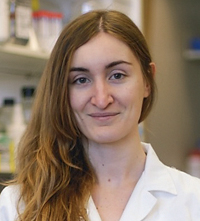
Leire Abalde-Atristain, Ph.D. abaldeat@ohsu.edu
Postdoctoral Fellow
Born in the beautiful town of San Sebastian in the Basque Country (Northern Spain), Leire received her B.Sc. in Biotechnology from the Autonomous University of Barcelona, and her M.Sc. in Biomedical Research from the Pompeu Fabra University in Barcelona. Sponsored by the Spanish predoctoral La Caixa Fellowship, she then obtained a Ph.D. from the Johns Hopkins University, where she investigated the molecular mechanisms underlying neuron survival and death under the guidance of Ted and Valina Dawson. Leire joined the Freeman lab in late 2019 to pursue her interest in the signals injured neurons send to elicit a response in glia.
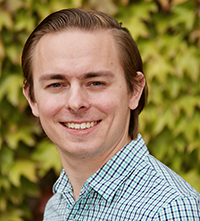
Luke Borchardt, B.S. borcharl@ohsu.edu
Graduate Student
Luke received his B.S. in Biochemistry and Economics from the University of Wisconsin – Madison in 2020. During the final year of his undergraduate studies and a year thereafter he worked for a pharmaceutical contract research organization performing quality control testing of inhaled drug products. He then returned to the University of Wisconsin – Madison to study anesthetic induced neurotoxicity in the lab of Dr. Misha Perouansky. He is now a graduate student in the Neuroscience Graduate Program at OHSU studying astrocyte regulation of neural circuits in the Freeman lab.
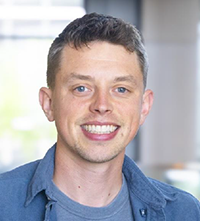
Nathaniel Ghena, Ph.D. ghena@ohsu.edu
Postdoctoral Fellow
Nathaniel earned his B.S. in Neuroscience from Central Michigan University in 2016, where he researched Huntington’s disease in Dr. Gary Dunbar’s lab. After graduation, he joined Dr. Mark Mattson’s lab at the National Institute on Aging as a postbaccalaureate IRTA fellow in 2016, studying how intermittent fasting and ketone metabolism engage Sirtuin 3 to protect against Alzheimer’s disease-related pathology and network hyperexcitability. In 2018, Nathaniel began his Ph.D. in Neuroscience at the University of Utah in the lab of Dr. Monica Vetter, where he examined how developmental apoptosis shapes microglial migration, fate specification, and transcriptional identity utilizing the developing murine retina. He joined the Freeman Lab in 2024 to investigate how crosstalk between neurons and glia orchestrate the refinement of the developing nervous system.
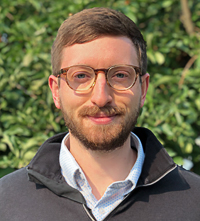
Kevin Guttenplan, Ph.D. guttenpl@ohsu.edu
Postdoctoral Fellow
Kevin received his B.A. in Neuroscience and Mathematics from Pomona College in 2014, where he used biochemistry to characterize novel proteins in Drosophila melanogaster and mathematical modeling to better understand neuronal development. He then joined the lab of Dr. Ben Barres at Stanford University to study the role of astrocytes in mouse models of central nervous system diseases and injuries, earning his Ph.D. in Neurosciences in 2021. As a postdoc in the Freeman Lab, Kevin now studies the mechanisms that allow astrocytes to sense and respond to changes in the brain, including how astrocytes influence neuronal circuits.
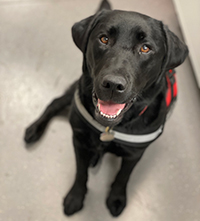
Kona Guttenplan
Official Lab Lab
Kona received her dogtorate at service dog school in 2021 and joined the Freeman Lab soon after. As official Lab lab, Kona focuses on inflammatory responses of the enteric nervous system as well as novel applications of puddle water.
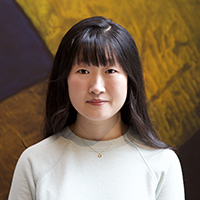
Dongeun Heo, Ph.D. heo@ohsu.edu
Postdoctoral Fellow
Dongeun received her B.S. degree in Neurobiology from Georgetown University, where she first developed her interest in glial cells in the lab of Jeffrey Huang. She earned her Ph.D. in Neuroscience from Johns Hopkins University, where she studied oligodendrocyte lineage cells using a diverse set of transgenic mouse lines in the lab of Dwight Bergles. Dongeun joined the Freeman and Monk labs in September 2021 and is interested in investigating the development and function of astrocytes using both fruit fly and zebrafish models.
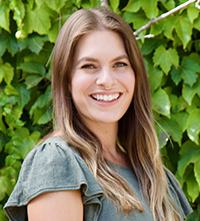
Madie Hupp, B.S. hupp@ohsu.edu
Graduate Student
Madie received her B.S. in Biology at Kennesaw State University, where she researched Akirin’s role in heart development using Drosophila melanogaster in the Nowak lab. After graduation, she joined the Allen Institute for Brain Science in their efforts to describe and map different cell types in the mouse and human brain. Madie also contributed to Alzheimer’s Disease research using spatial transcriptomics. In 2022, she matriculated into the Neuroscience Graduate Program, then joining the Freeman lab in 2023 to follow her interests and study mechanisms underlying synaptic pruning.
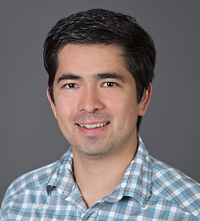
Ernesto Manzo, Ph.D. manzoe@ohsu.edu
Postdoctoral Fellow
Ernesto received his B.A. in Biology from Swarthmore College where he became fascinated by how genetic alterations cause human disease. In 2010, he was an intern at the Clinic for Special Children, where he studied genetic diseases in the Amish and Mennonite Plain populations under Dr. Erik G. Puffenberger. He received his Ph.D. in Molecular and Cellular Biology from the University of Arizona where he studied metabolic defects implicated in amyotrophic lateral sclerosis (ALS) in the laboratory of Dr. Daniela C. Zarnescu. He is currently interested in how cellular mechanisms control neuronal decay. He uses the fruit fly as a model organism to better understand how neurons survive or degenerate in response to genetic insults. Ernesto is a former HHMI predoctoral Gilliam Fellow with an interest in promoting diversity in higher education.
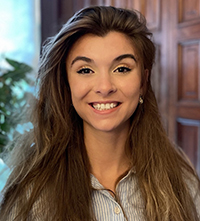
Erin Santos, B.A. santoeri@ohsu.edu
Graduate Student
Erin earned her B.A. from Colgate University in 2020 where she majored in Neuroscience. During her time at Colgate, she conducted research in Dr. Jun Yoshino's lab, investigating astrocytic modulation of the microglial inflammatory response. Erin joined the lab of Dr. Douglas Fields at the National Institute of Child Health and Human Development (NICHD) as an IRTA fellow in 2020, where she studied activity-dependent changes in myelin and nodes of Ranvier in the mouse visual system. She joined the OHSU Neuroscience Graduate Program in 2022 and became a member of the Freeman Lab in 2023. Erin's research interests now include astrocyte calcium signaling and glial regulation of neuronal circuitry.
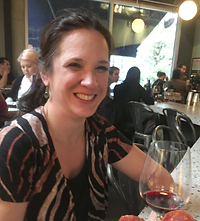
Amy Sheehan, B.S. sheehana@ohsu.edu
Senior Research Project Manager
Amy received her B.S. in Biology from Eastern Connecticut State University in 1994. From 1994 to 1999, she was the head research assistant — under the direction of Dr. Petra Ross-Macdonald — on a yeast function genome project in the laboratory of Dr. M. Snyder at Yale University. Amy moved to Eugene, Oregon in 1999. In 2000, she became a research technician III with the Howard Hughes Medical Institute, serving as the head molecular biologist on numerous projects in Dr. Chris Doe's lab at the University of Oregon. From 2004 to 2017, Amy was a research associate II and lab manager in the Freeman lab at the University of Massachusetts Medical School, Worcester, Massachusetts. She continues in her role as the Freeman lab manager here at the Vollum Institute. However, Amy's main job is being the mother of four wonderful kids and running the Freeman household — all with a large glass of wine!
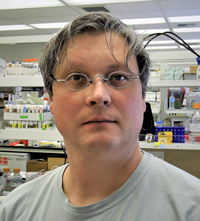
Tobias Stork, Ph.D. storkw@ohsu.edu
Research Assistant Professor
Tobias worked on various aspects of glial development and function using Drosophila as a model organism throughout his career. He earned his masters degree and Ph.D. in Biology in the lab of Christian Klämbt at the University of Münster, Germany — analyzing the genetic control of midline glia development and the anatomy and function of the glial blood-brain barrier. In 2007 Tobias joined the Freeman lab to study the genetic control of astrocyte morphogenesis as well as astrocyte function in the Drosophila nervous system.
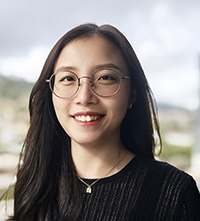
Hoa Trinh, B.S. trinhho@ohsu.edu
Graduate Student
Hoa earned a B.S. in Human Physiology from the University of Oregon in 2020, where she investigated motor system inhibition mechanisms in the Greenhouse Lab, contributing to electrophysiological studies of action termination. She then gained diverse research experience in both clinical and basic science, coordinating neurodegenerative disease trials and studying AAV tropism and genetic variation in neural circuits at Dr. Arpiar Saunders's Lab. In 2023, Hoa matriculated into the Neuroscience Graduate Program, then joining the Freeman lab in 2024 to follow her interests in the neuron/glia signaling mechanisms underlying synaptic pruning.